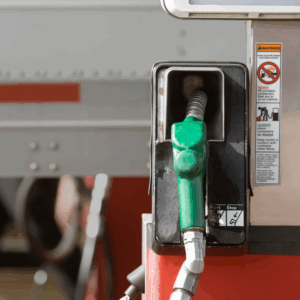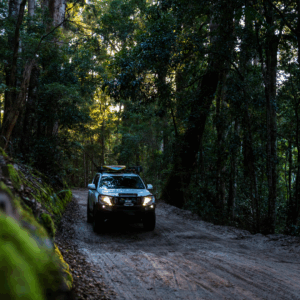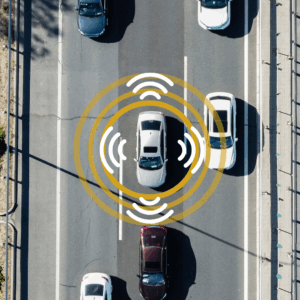3 Winter Car Emergencies and How to Solve Them
Nobody ever wants to experience an emergency while on the road, but winter car emergencies seem to feel especially challenging. There’s something about the added frustration of cold and snow that just makes them feel that much more difficult and dangerous to deal with. Unfortunately, emergencies are just the reality of driving and vehicle ownership, especially when you live in the Rockies. We’ve created a list of our customers’ most common winter car emergencies, with helpful tips for making them more manageable.
Winter Car Emergency #1: Dead Battery
A dead battery is by far the most common winter car emergency. No one likes sitting in a freezing car and hearing the tell-tale click of the car failing to start after turning the key. It always seems to happen when you’re late for work or late at night in the middle of a parking lot full of strangers. Fortunately, it is one of the simpler emergencies to resolve — if you are prepared.
The first step is to make sure the battery is actually the problem. Signs of a dead battery include:
- Dimming headlights
- A click or a struggle to start while turning the key or pressing the start button
- Lack of dashboard lights, radio, heater or other in-car functions
Once you’ve determined the battery is the problem, it’s time to jumpstart your car. If you have roadside assistance, this is a great time to get a little of your money back by requesting a battery service call. This is a safer alternative to asking strangers in the parking lot for help. If it is a particularly cold day, you may have to wait a little longer for service — you won’t be the only one with a dead battery.
If you don’t have roadside assistance, you’ll need to jump your car yourself. You can either use a set of jumper cables and the assistance of another vehicle, or, if you have one, you can use a portable charger. For the latter, follow the instructions on the user manual, for jumper cables, take the following basic steps or use the steps included in your vehicle manual.
Basic Steps for Jumpstarting a Car Battery
- Open the hood and locate the battery. Ensure you have a safe area to park your assisting vehicle and ensure it is close enough to reach the length of your jumper cables. Warning: Do not work in an enclosed space while running your vehicles to jump your battery!
- Inspect your jumper cables and ensure they have the proper safety coating on the handles. We’ve seen enough worn out cables in our time to know this is a good recommendation. If you have gloves, please wear them while working with the cables.
- Working carefully and ensuring the metal components of your jumper cables do not touch one another (or you), begin by connecting one end of the red cable (+) to the positive (+) terminal of the battery. It may also have red coloring to indicate a match.
- Connect the other red cable (+) to the positive terminal of the other car.
- Connect the black cable (-) to the working battery (-).
- Connect the other end of the black cable to the dead battery (-).
- Again, do not touch the cables together, especially while the clamps are attached to either battery. Do not touch the cables to your body.
- Start the working car. Let it run for a few minutes so it can give the dead battery some energy.
- Attempt to start the car. If the engine cannot quite turn over, leave it to charge a little longer.
- Once the car has started, wait several more minutes for it to charge.
- Carefully remove the jumper cables in reverse order, being careful not to touch the clamps together.
If your car battery does not start, you may need to bring it to the shop for a test and re-charge. This will require you to remove the battery. Please follow the instructions in your vehicle manual for safely removing the car battery.
Winter Car Emergency #2: Stuck on Ice or Snowpack
When the roads ice over in Colorado, it doesn’t matter how many wheels you can turn at a time — they’re all going to be spinning in place! Getting stuck on the ice is frustrating. It can also be dangerous. We’ve all seen the videos online of vehicles sliding down hills and smashing into curbs, mailboxes and other cars. That’s probably not a fun insurance claim for anyone involved!
There are a few tricks you can try to get your car off the ice and back on dry road once more.
- Don’t keep uselessly spinning your tires. You could end up getting the car stuck even worse. The spinning creates friction that melts the ice. Unfortunately, it’s not enough friction for you to melt it down to the road – it’s just enough to refreeze and add more ice to the mess.
- Try digging out the car. A small hand shovel can help you dig down to solid ground and give your car tires something to grip.
- Try gently shifting the car between forward and reverse. Make sure all humans, pets and other precious things are not near the vehicle. If you manage to pull out of the ice, you may suddenly accelerate or lose control of your steering with the shift. If the vehicle doesn’t make any movement, try cat litter or sand.
- We always recommend customers carry cat litter or sidewalk salt (or both) in their vehicles for just this problem. Sprinkle the litter behind the tires to give your vehicle traction. Sand is also great, but we recommend it is a coarser grit so you don’t end up with muddy ice.
- Try a car mat or old carpeting. You can throw a few pieces of used carpet in your trunk during the winter for traction, as well.
- Use a tow rope or strap and have another vehicle pull you out. This is not something you should attempt unless you know what you are doing. We have seen the results of improperly placed tow ropes and it is not pretty! If you do have your car pulled out by a helpful passerby, be sure to bring it in to us for an inspection. We can ensure no damage has been done to your chassis — or worse.
- If your car still won’t budge, you may have to call in a professional tow company. Check your car insurance to see if you have any tow benefits or other roadside assistance.
Winter Car Emergency #3: Stuck on the Side of the Road
Sometimes, Colorado weather can get so bad that you simply cannot drive another mile without endangering yourself and your passengers. When that happens it may mean spending several hours in your car on the side of the road waiting for help, plows or clearer weather. If you’ve driven in Colorado for any length of time, you’ve probably seen news stories about drivers stuck on I-70 or I-25, or you’ve been one of the unlucky ones yourself.
Here’s how to stay safe when stuck in your car during bad weather:

- Always ensure you have more than half a tank of gas when driving during inclement weather. Your gas will keep the car warm and the battery charged as you wait out the weather or wait for help.
- Do the best you can to pull your car off the road. This will allow the plows to come through and do their job so you can get home. Stay in the breakdown lane if at all possible. If you are on a two-lane road without a pull-off, try to make your way safely to a wide shoulder.
- Turn on your hazard lights. If you have reflectors, place them on the front and back of your vehicle and clear them frequently so you are visible to emergency services and road crews.
- Call your loved ones and give them your location (to the best of your abilities). Try to conserve your battery. We tell customers to keep a phone charger in their emergency kit for this reason. Then you won’t have to choose between your safety and sanity if you want to keep everyone entertained. If phone calls do not work, try texting. Please note that most phones have an emergency function that can help you connect outside of service areas.
- Ensure the exhaust pipe of your car is clear. Set an alarm to check it whenever the car is running. If snow or debris builds up around the tailpipe, the air in your car can become poisonous.
- Keep your windows cracked. Give your car regular fresh air circulation. The more people in the car, the more important it is to cycle your air.
- Wrap up in blankets, coats and warm clothing to stay warm. You can even use floor mats, plastic bags, newspapers or anything else in the car if you do not have coats and blankets.
- Stay hydrated and share some snacks. You should keep a few granola bars and water in your trunk for just such an emergency.
- Do not run the car continuously, as you do not know when you will have assistance. Conservation is key.
- DO NOT LEAVE YOUR VEHICLE. Unless you are in extreme danger, or are within a very short and manageable distance from a safe, warm shelter, do not leave your car. If you are on an open road, road crews will find you and your vehicle when they plow your area. Yes, that may take some time. However, you will not somehow make it faster on foot. If an emergency causes you to leave your car behind, leave a detailed note with your route and destination, then mark the route as you go.
Be Prepared and Stay Safe Out There!
While you may not be able to avoid all of these winter car emergencies, you can make them a little easier to manage with planning and preparation. Build yourself a solid car emergency kit, take precautions when traveling in the winter and stay alert and you’ll stay safer on the road this winter.
Have you hit a curb or run into a ditch this winter? You may want to have your vehicle inspected — even if your car seems to drive away fine. Running off the road or bumping into a curb can result in:
- Suspension damage
- Wheel and tire damage
- Brake damage
- Alignment issues
- Driveshaft damage
- And worse!
Bring your vehicle in as soon as possible after these types of accidents. We may be able to help you prevent more expensive problems down the road.



